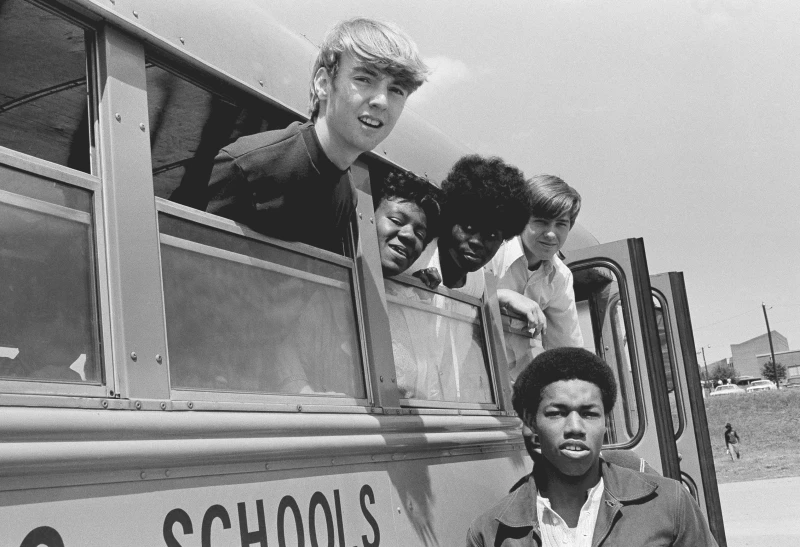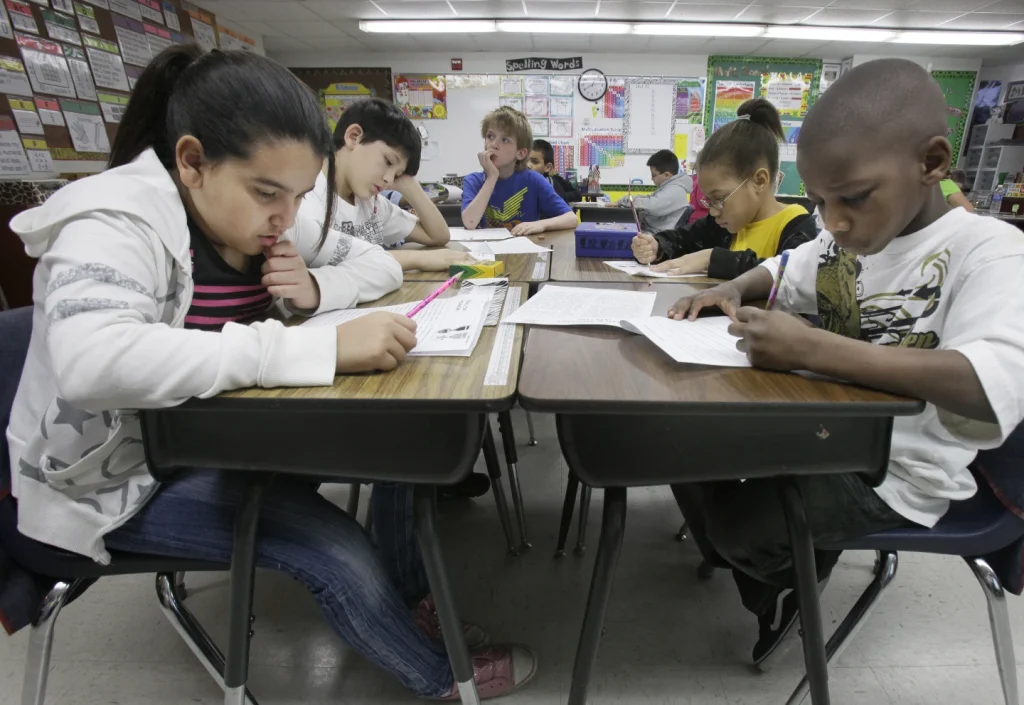Seventy years have passed since the historic ruling of the U.S. Supreme Court in Brown v. Board of Education, a landmark decision that declared the segregation of children in schools based on race as unconstitutional.
This ruling, etched into the annals of American legal history, symbolized a significant step towards achieving equality and justice in education. However, despite the progress made on paper, the specter of school segregation continues to loom large over the American educational landscape.
The re-segregation of schools in the United States stands as a stark reminder of the persistent challenges that hinder the realization of a truly equitable and inclusive educational system.
In contemporary America, the demographic landscape of schools reflects a rich tapestry of diversity, with students hailing from varied racial and ethnic backgrounds.
Yet, beneath this veneer of diversity lies a troubling reality: a significant proportion of Black and Hispanic students find themselves enrolled in schools where the overwhelming majority of their peers share the same racial or ethnic identity.
This intense segregation by race is not merely a coincidence but is intricately intertwined with socioeconomic disparities. Schools where students of color constitute more than 90% of the student body are disproportionately located in low-income areas, perpetuating a cycle of educational inequity.
The consequences of racial and socioeconomic segregation in schools reverberate far beyond the confines of the educational system.
Research indicates that students attending high-poverty schools, irrespective of their own family’s financial status, are more likely to experience inferior educational outcomes.
This glaring disparity in resources and opportunities not only exacerbates existing inequalities but also undermines the fundamental principle of equal access to quality education for all students.
The detrimental effects of segregation on academic achievement, social mobility, and long-term success underscore the urgent need for concerted action to address this systemic issue.
Despite the noble aspirations of the Brown decision, the journey towards achieving true school integration has been fraught with obstacles.
Over the years, legal challenges and policy shifts have eroded the mechanisms through which schools could be effectively integrated. The fading vision of diverse and inclusive schools, once championed by Brown v. Board of Education, now appears as a distant memory rather than a tangible reality.
The stagnation in efforts to combat school segregation reflects a broader societal complacency towards the enduring legacy of racial and economic disparities in education.
The essence of the Brown ruling transcends mere notions of diversity; at its core, it embodies a vision of equity, opportunity, and justice in education.
The intertwined issues of funding inequity and segregation underscore the systemic nature of the challenges faced by students of color in accessing quality education.
As Ary Amerikaner aptly notes, the unequal distribution of resources among schools based on racial demographics not only undermines the educational prospects of students of color but also poses a threat to the democratic ideals of our society.

The persistent re-segregation of schools in America serves as a sobering reminder of the unfinished work towards achieving educational equity and justice.
The legacy of Brown v. Board of Education beckons us to confront the systemic barriers that perpetuate racial and socioeconomic disparities in our educational system.
As we reflect on the past seven decades since the landmark ruling, it is incumbent upon us to reinvigorate our commitment to creating inclusive, equitable, and just educational environments for all students.
Only through collective action, policy reform, and a steadfast dedication to the principles of equality and justice can we hope to realize the true promise of Brown and build a brighter future for generations to come.
The quest for racial integration in American schools has been a tumultuous journey marked by progress and setbacks, court rulings and societal resistance.
The impact of desegregation programs on the lives of students, particularly Black children, has been profound, with integrated schools offering better prospects for educational attainment, graduation rates, health, and earning potential.
However, the road to sustained integration has been marred by legal challenges, shifting court decisions, and the resurgence of segregation in many districts across the country.
In the wake of landmark court rulings such as Swann v. Mecklenburg in 1971, which upheld the use of busing to integrate schools, there was a glimmer of hope that the country was moving towards a more equitable education system.
Chief Justice Warren Burger’s acknowledgment that historical discrimination necessitated proactive measures to address segregation signaled a recognition of the systemic inequalities embedded in the education system.
Yet, subsequent court decisions like Milliken v. Bradley dealt a severe blow to desegregation efforts, unraveling integration plans and allowing for the escape of white families from diverse school environments.
The legal landscape continued to shift with rulings like Freeman v. Pitts and Parents Involved v. Seattle Public Schools, which limited the ability of courts to monitor and enforce desegregation efforts.
The erosion of tools available to address segregation, as noted by former Seattle Public Schools board member Stephan Blanford, underscored the challenges faced by advocates of integration.
The gradual dismantling of court-monitored desegregation plans and the restriction on race-based student assignments in voluntary integration programs further complicated the pursuit of diverse and inclusive schools.
The case study of Charlotte-Mecklenburg Schools exemplifies the complexities of achieving and sustaining integration.
Once hailed as a model for successful integration efforts, the district has since become one of the most segregated in North Carolina following the overturning of busing programs based on race.
The shift towards a family-based school assignment process, ostensibly promoting diversity through individual choices, has inadvertently perpetuated segregation by leaving families to navigate a system marked by disparities in resources and opportunities.
Recent lawsuits in states like New Jersey and Minnesota, such as the case brought by Alex Cruz-Guzman challenging segregation in Minneapolis and St.
Paul public schools, highlight the ongoing struggle for integration. Cruz-Guzman’s experience as an immigrant parent seeking integrated schools for his children underscores the persistent barriers faced by marginalized communities in accessing quality education.
The protracted legal battles and the need for continued litigation to address segregation underscore the enduring nature of the challenge of achieving true educational equity.

As the arc of history bends towards justice, the legacy of desegregation efforts serves as a reminder of the importance of vigilance in safeguarding the gains made towards integration.
The interplay between legal interventions, societal attitudes, and educational policies underscores the multifaceted nature of the quest for inclusive and equitable schools.
While the journey towards integration may be fraught with obstacles, the pursuit of a more just and inclusive education system remains a moral imperative that demands collective action and unwavering commitment to dismantling barriers to opportunity for all students.
